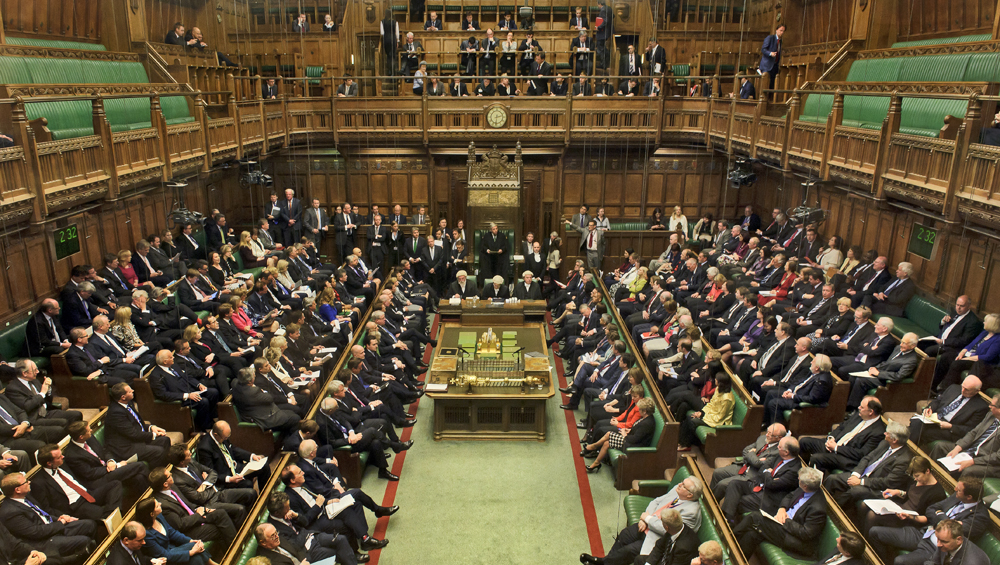House of Commons uses e-voting for the first time in history
Staff work hard to implemented new tech within weeks, though MPs suggest they’re keen to ditch it as soon as possible


MPs have successfully voted on a motion using an online platform as part of efforts comply with COVID-19 lockdown restrictions, marking a significant milestone in the House of Commons’ more than 200-year history.
Using a system installed on the digital ‘MemberHub’ platform, MPs were invited to cast their votes on a motion through their computers or handheld devices during a 15-minute window from 5:45 pm on Tuesday evening.
The vote itself was not on legislation, but on whether MPs believed the House of Commons had considered COVID-19 following a two-day debate. Motions such as this are not normally voted on, but was done so last night to test the system’s resilience in a live environment.
The motion was approved by 363 votes to 248, a majority of 115, without any hitches, with the result delivered less than half an hour after the vote was held.
While e-voting represents a major milestone in the history of UK democracy, the system could be abandoned as soon as next week, with the government suggesting it wants MPs to return to physical ways of working as soon as possible.
Demand for such technology arose when the House of Commons returned from its recess in April, with social distancing rules meaning only 50 MPs can be present on the chamber at any one time. Using video conferencing platform Zoom, an additional 120 MPs can join proceedings online.
The voting system has been successfully implemented following a rigorous set of trials and a tight four-week implementation period. House of Commons staff, in particular, have worked around the clock to implement the form within a matter of weeks, in collaboration with other wings of parliamentary machinery, including the Parliamentary Digital Service.
Get the ITPro daily newsletter
Sign up today and you will receive a free copy of our Future Focus 2025 report - the leading guidance on AI, cybersecurity and other IT challenges as per 700+ senior executives
The biggest challenge, as far as implementing the technology was concerned, was the time frame set out. Everything, otherwise, was manageable, although IT Pro understands the House of Commons’ network security team was highly reluctant to allow people to vote remotely due in principle due to the overwhelming security concerns.
The decision was made to implement a system using the MemberHub platform, which is normally used for tabling parliamentary questions or motions and can be accessed by MPs on any device. Security for the site, which is powered by Microsft, is guaranteed through the implementation of Single Sign-on (SSO) authentication and multifactor authentication (MFA).
Despite these guarantees, some MPs had expressed concerns in the lead-up to the implementation. One senior Conservative MP, for example, suggested that ‘children, spouses or staff’ would be able to vote remotely using the system should they bypass the security measures in force, in comments delivered to the Telegraph.
Others, meanwhile, have expressed concern over the data collected by the system and the potential for invasion of privacy. The voting system only records IP addresses, however, and doesn’t allow individuals to manually access this data. The registered vote is combined with an individual’s location they voted from and hashed into an encrypted stream.
Although there are no technical limitations in using the electronic voting system on an indefinite basis, use of this system beyond any period necessary to comply with lockdown measures is unlikely.
Electronic voting may be useful in the future where MPs are unable to attend the House of Commons due to health or childcare reasons. Currently, MPs unable to attend for valid reasons are paired with another from the opposing side of a debate, who declines to cast their vote in the interests of fairness.
Continuing the use of this platform would require MPs to agree to do so, with the government suggesting it’s keen to abandon the system as soon as next week. The leader of the House of Commons Jacob Rees-Mogg, for example, said that MPs must “set an example” with ministers keen for individuals to return to work.
"It is clear that soon Parliament must set an example of how we move back gradually to a fully-functioning country again,” he said. “Our constituents would expect nothing less.”
With MPs are expected to leave on ‘Whitsun recess’ which takes place between 21 May and 2 June, the government may therefore seek to curtail the use of the system from next month and return to physical voting.

Keumars Afifi-Sabet is a writer and editor that specialises in public sector, cyber security, and cloud computing. He first joined ITPro as a staff writer in April 2018 and eventually became its Features Editor. Although a regular contributor to other tech sites in the past, these days you will find Keumars on LiveScience, where he runs its Technology section.
-
 Bigger salaries, more burnout: Is the CISO role in crisis?
Bigger salaries, more burnout: Is the CISO role in crisis?In-depth CISOs are more stressed than ever before – but why is this and what can be done?
By Kate O'Flaherty Published
-
 Cheap cyber crime kits can be bought on the dark web for less than $25
Cheap cyber crime kits can be bought on the dark web for less than $25News Research from NordVPN shows phishing kits are now widely available on the dark web and via messaging apps like Telegram, and are often selling for less than $25.
By Emma Woollacott Published